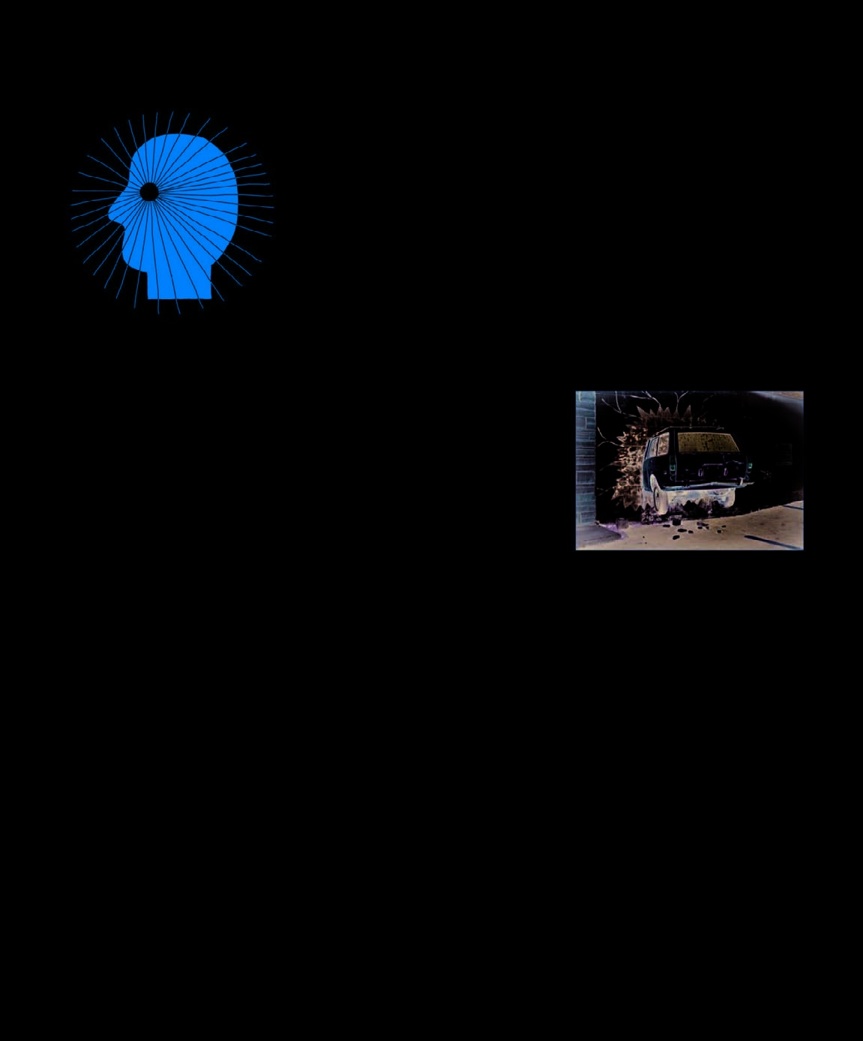The Psychology Book (60 page)
Read The Psychology Book Online
Authors: Unknown

190 ENDEL TULVING
memorable event—such as the 9/11
terrorist attacks—occurs, are an
extreme example of this.
Tulving described recollection
from episodic memory as “mental
time travel,” involving us in a
Remembering is
revisiting of the past to access
mental time travel.
the memory. In his later work he
Endel Tulving
pointed out that episodic memory
is unique in featuring a subjective
sense of time. Specific to humans,
it involves not merely awareness of
what has been, but also of what
may come about. This unique
ability allows us to reflect on our
lives, worry about future events,
Emotional events such as weddings
and make plans. It is what enables
give rise to episodic memories. These
are stored in such a way that the
humankind to “take full advantage
person remembering relives the event,
of its awareness of its continued
in a form of “time travel.”
existence in time” and has allowed
us to transform the natural world
semantic memories are organized
provide a retrieval cue for the
into one of numerous civilizations
into meaningful categories of subject
semantic memory “Beijing,” the
and cultures. Through this facility,
matter, episodic memories are
mention of “40th birthday” might
“time’s arrow is bent into a loop.”
organized by relation to the specific
act as a cue for the retrieval of
time or circumstances in which
what had been said over that
Encoding information
they were originally stored. For
dinner. The more strongly these
Tulving realized that organization
example, a particular conversation
autobiographical memories are
is the key to efficient recall for both
may have taken place during a
associated with the time and
semantic and episodic memory, and
birthday dinner, and the memory
circumstances of their occurrence,
that the brain somehow organizes
of what was said would be stored
the greater their accessibility is
information so that specific facts
in association with that occasion.
likely to be. “Flashbulb memories,”
and events are “pigeonholed” with
Just as the category of “city” might
which are stored when a highly
related items. Recalling that specific
Endel Tulving
Born the son of a judge in Tartu,
University of Toronto, where
Estonia, Endel Tulving was
he graduated in psychology in
educated at a private school for
1953, and took his MA degree in
boys, and although a model
1954. He then moved to Harvard
student, he was more interested
where he gained a PhD for his
in sports than academic subjects.
thesis on visual perception.
When Russia invaded in 1944,
In 1956, Tulving returned to the
he and his brother escaped to
University of Toronto, where he
Germany to finish their studies
continues to teach to this day.
and did not see their parents again
until the death of Stalin 25 years
Key works
later. After World War II, Tulving
worked as a translator for the
1972
Organization of Memory
American army and briefly
1983
Elements of Episodic
attended medical school before
Memory
emigrating to Canada in 1949. He
1999
Memory, Consciousness,
was accepted as a student at the
and the Brain

COGNITIVE PSYCHOLOGY 191
information is then made easier
Different types of memory
are
by direction to the appropriate
physically distinct, according to
pigeonhole—the brain “knows
Tulving, because each behaves and
Semantic memory
functions in a significantly
where to look” for the memory it
stores facts and
different way.
knowledge.
wants and can narrow down the
search. The implication, he
believed, is that the brain encodes
each memory for storage in long-term
memory, so that specific memories
Episodic memory
can be located for recollection by a
stores events and
more general retrieval cue. The
recollections.
cues that prompt episodic memory
are usually sensory. A specific sound,
such as a piece of music, or a scent
can trigger a complete memory.
Tulvings’s theory of the
Procedural memory
“encoding specificity principle”
stores methods and
was especially applicable to
techniques.
episodic memory. Memories of
specific past events are encoded
according to the time of their
occurrence, along with other
recollection, even though the
are active during encoding and
memories of the same time. He
information is stored and available
retrieval of memory, and establish
found that the most effective cue
in long-term memory.
that episodic memory is associated
for retrieving any specific episodic
Unlike previous theories of
with the medial temporal lobe and,
memory is the one which overlaps
memory, Tulving’s encoding principle
specifically, the hippocampus.
with it most, since this is stored
made a distinction between memory
Partly due to his unorthodox
together with the memory to be
that is available and that which is
and untutored approach, Tulving
retrieved. Retrieval cues are
accessible. When someone is unable
made innovative insights that
necessary to access episodic
to recall a piece of information, it
proved inspirational to other
memory, but not always sufficient,
does not mean that it is “forgotten”
psychologists, including some of
because sometimes the relationship
in the sense that it has faded or
his former students such as Daniel
is not close enough to allow
simply disappeared from long-term
Schacter. Tulving’s focus on storage
memory; it may still be stored, and
and retrieval provided a new way of
therefore be available—the problem
thinking about memory, but it was
is one of retrieval.
perhaps his distinction between
semantic and episodic memory that
Scanning for memory
was his breakthrough contribution.
Tulving’s research into the storage
It allowed subsequent psychologists
Relating what we know
and retrieval of memory opened up
to increase the complexity of the
about the behavior of memory
a whole new area for psychological
model to include such concepts as
to the underlying neural
study. The publication of his
procedural memory (remembering
structures is not
findings in the 1970s coincided
how to do something), and the
at all obvious. That’s
with a new determination by many
difference between explicit memory
real science.
cognitive psychologists to find
(of which we are consciously aware)
Endel Tulving
confirmation of their theories in
and implicit memory (of which we
neuroscience, using brain-imaging
have no conscious awareness,
techniques that had just become
but which nonetheless continues
available. In conjunction with
to affect us). These topics remain
neuroscientists, Tulving was able
of great interest to cognitive
to map the areas of the brain that
psychologists today. ■

192
PERCEPTION IS
EXTERNALLY GUIDED
HALLUCINATION
ROGER N. SHEPARD (1929– )
IN CONTEXT
APPROACH
H
ow the mind makes use
of information gathered
from the external world
has been a major concern for
Perception
philosophers and psychologists
BEFORE
throughout history. Exactly how
do we use the information gained
1637
René Descartes in his
through our senses? In the early
treatise
Discourse on the
1970s, cognitive and mathematical
Method
suggests that though
psychologist Roger Shepard
our senses can be deceived,
proposed new theories of how
we are thinking beings with
An optical illusion
creates confusion
the brain processes “sense data.”
in the viewer, demonstrating that we are
innate knowledge.
Shepard argued that our brains
not just perceiving, but also attempting
1920s
Gestalt theorists study
to fit the sensory data to what we
not only process sense data, but also
visual perception, finding that
already understand in the mind’s eye.
make inferences from it, based on an
people tend to view objects
internal model of the physical world
comprising composite parts
where we can visualize objects in
world and mental visualization.
as a unified whole.
three dimensions. The experiment
Perception, Shepard said, is
he used to prove this, in which
“externally guided hallucination,”
1958
Donald Broadbent’s book
subjects tried to ascertain whether
and he described the processes
Perception and Communication
two tables—each drawn from a
of dreaming and hallucination as
introduces a truly cognitive
different angle—were the same,
“internally simulated perception.”
approach to the psychology
showed that we are able to perform
Shepard’s research introduced
of perception.
what Shepard called “mental
revolutionary techniques for
rotation:” turning one of the tables
identifying the hidden structure
AFTER
in our mind’s eye for comparison.
of mental representations and
1986
American experimental
Shepard used a series of optical
processes. His work in visual and
psychologist Michael Kubovy
(and aural) illusions to demonstrate
auditory perception, mental imagery,
publishes
The Psychology
that our brains interpret sense data
and representation has influenced
of Perspective and
using both knowledge of the external
generations of psychologists. ■
Renaissance Art
.
See also:
René Descartes 20–21 ■ Wolfgang Köhler 160–61 ■
Jerome Bruner 164–65 ■ Donald Broadbent 178–85 ■ Max Wertheimer 335

